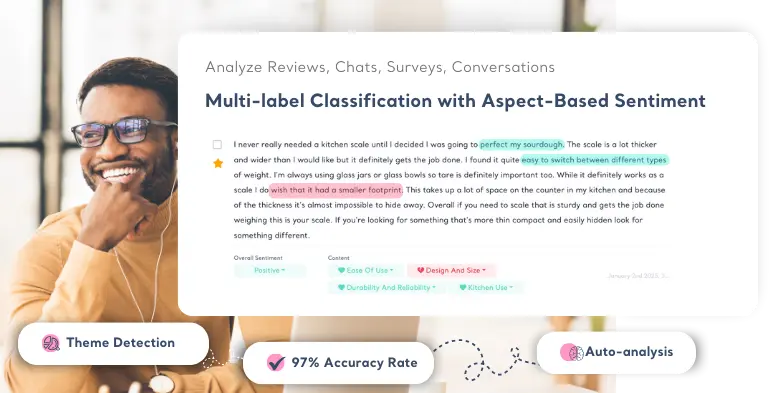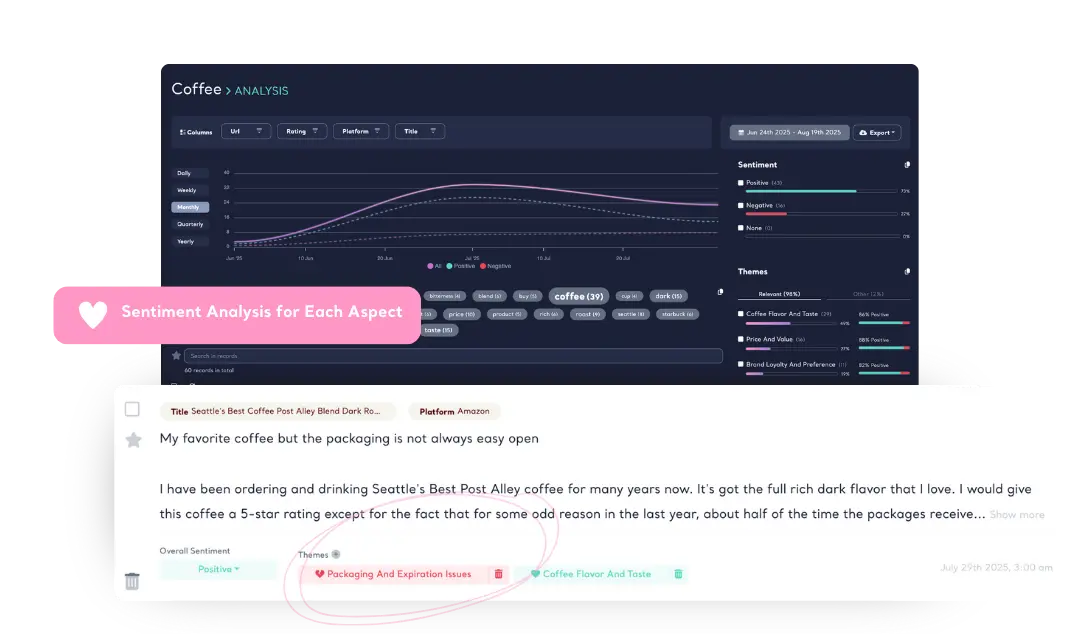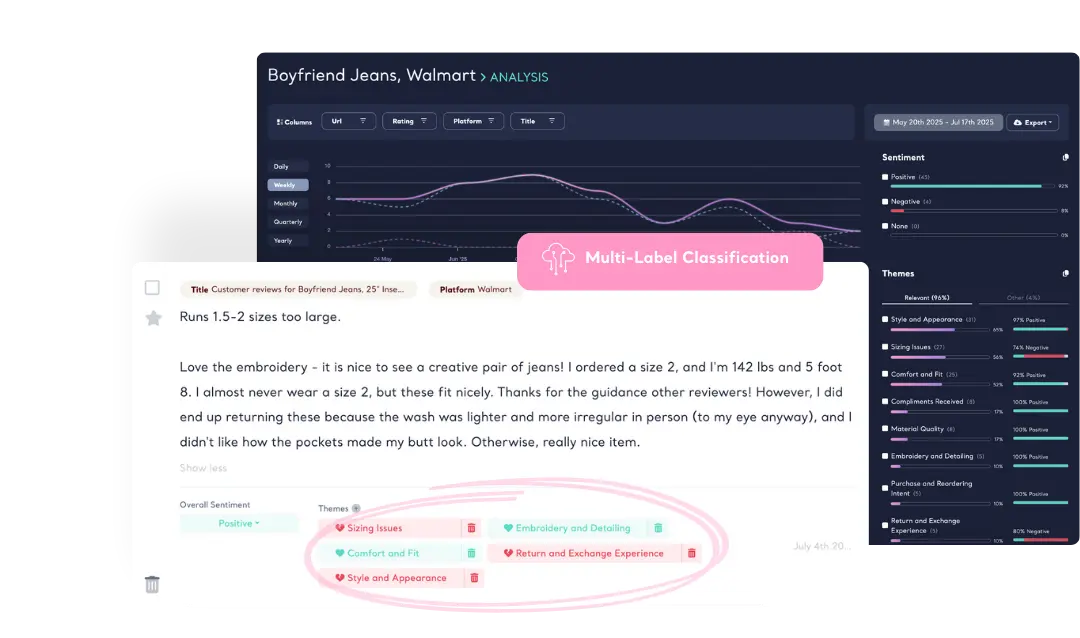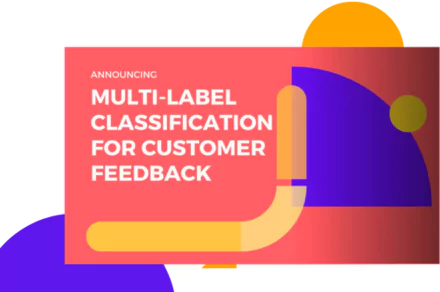Aspect Based
Sentiment Analysis
Kimola breaks down feedback into themes, assigning sentiment to each—so you see exactly what excites customers and what holds them back.

Kimola breaks down feedback into themes, assigning sentiment to each—so you see exactly what excites customers and what holds them back.
Traditional approaches give you an overall sentiment like Positive, Negative, or Neutral, but what if different aspects have different sentiments? Kimola assigns sentiment for each theme in a single customer feedback so you know what customers love and what needs improvement.

Products are complex, and so is feedback. Kimola automatically identifies themes within a single customer feedback and assigns sentiments for each. Whether a customer loves your product quality but dislikes customer support, Kimola ensures every aspect is labelled correctly, giving you a true understanding of customer opinion regarding every detail.


Collect and centralize feedback.
Make sense of large-scale feedback.
Turn data into meaningful insights.
Find out how Kimola can improve your feedback analysis process.
Uncover customer needs, likes, and dislikes from product reviews and feedback.
Analyze customer reviews and ratings to optimize online shopping experiences.
Extract insights from social media conversations and online discussions.
Make sense of free-text survey responses with AI-powered analysis.
Understand customer sentiment and concerns from chat and call transcripts.
Identify workplace trends and employee sentiment from internal feedback and reviews.
Aspect-Based Sentiment Analysis (ABSA) identifies specific themes or aspects within customer feedback and determines sentiment for each one. Instead of assigning a single sentiment to an entire review, ABSA provides a more detailed breakdown of what customers like or dislike about different parts of a product or service.
Traditional sentiment analysis gives an overall sentiment score, but it doesn't tell you why customers feel that way. ABSA helps businesses pinpoint strengths and weaknesses at a granular level—whether it's product quality, pricing, or customer service—enabling more precise improvements and smarter decision-making.
Kimola automatically detects themes and topics in every customer review, then assigns sentiment to each aspect. Using AI-driven multi-label classification, it ensures every relevant part of the feedback gets analyzed separately, providing businesses with clear, actionable insights.
Kimola can apply aspect-based sentiment analysis to customer feedback from app store reviews, social media comments, e-commerce reviews, surveys, and customer support interactions.
Yes, Kimola can perform aspect-based sentiment analysis in 30+ languages and generates reports in English, Spanish, Portuguese, French, German, and Turkish, making it ideal for global businesses.
Analyze customer feedback in 30+ languages—no AI training needed.
Create a Free Account No credit card · No commitment Product Feedback Analysis
Product Feedback Analysis
 E-commerce Feedback Analysis
E-commerce Feedback Analysis
 Social Feedback Analysis
Social Feedback Analysis
 Open-ended Survey Analysis
Open-ended Survey Analysis
 Chatbot and Call Center Conversational Analysis
Chatbot and Call Center Conversational Analysis
 Employee Feedback Analysis
Employee Feedback Analysis